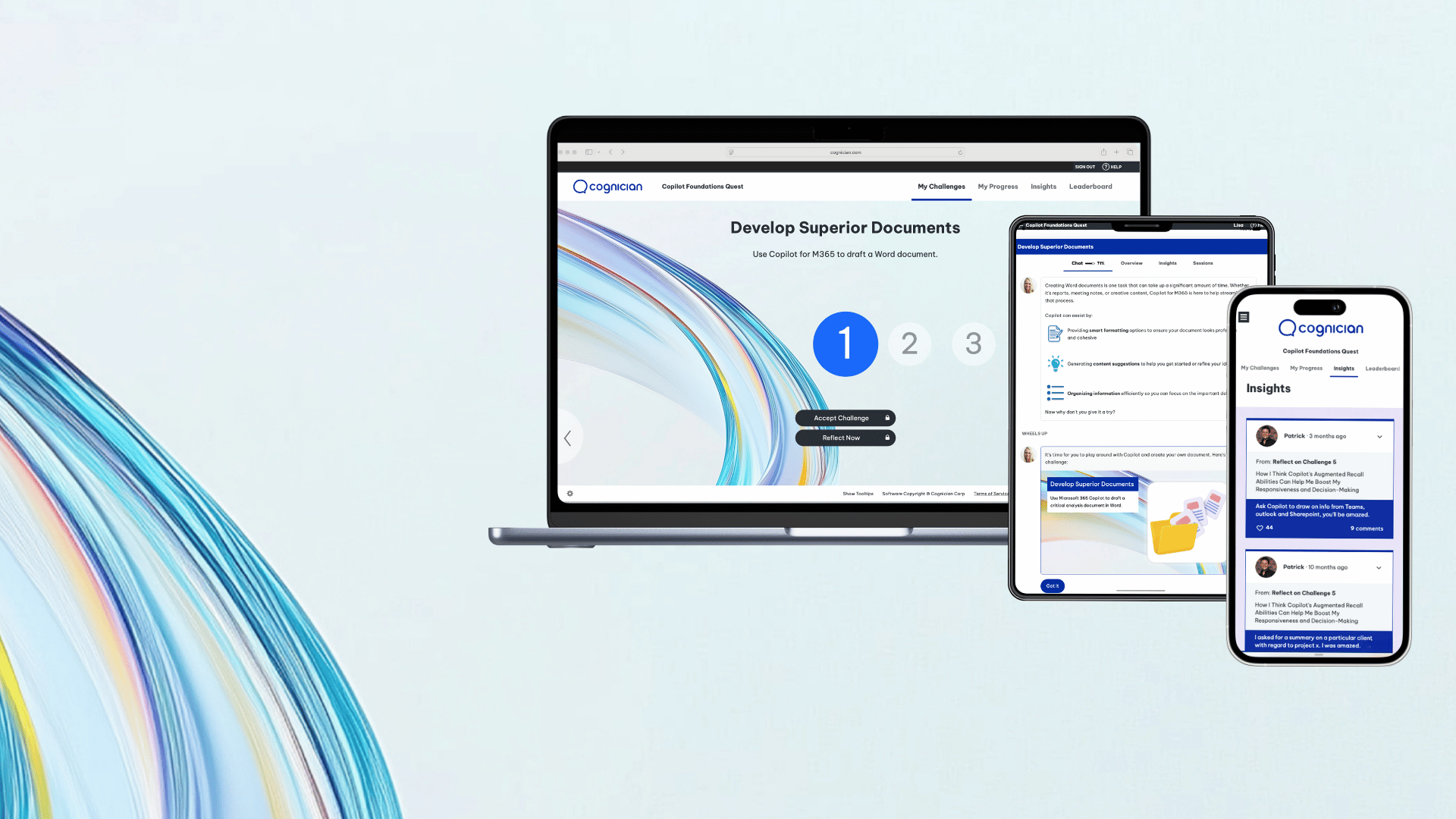There’s something to be said for simplicity. Especially when it comes to learning programs that claim to drive behavior change. As the saying goes, all that glitters is not gold.
Pop quiz: you’ve got two choices. One online learning solution is packed with exciting eye-candy. The other lacks delicious visuals. Which would you choose? If you’re like most people, you’d probably choose the visually-interesting option. But no matter how many bells and whistles it has, if a learning solution has no substance, the fancy additions only add noise. Just because something looks good, doesn’t mean that it is good. Or effective. Or that it actually drives engagement and reflection. Let’s look at how simplicity can dramatically impact a learner’s ability to absorb and retain information.
Fact 1: Simplifying language increases understanding and promotes memory retention
Ruth Colvin Clark and Richard E. Mayer make a strong case for simplifying language in their book, E-LEARNING and the Science of Instruction. They recommend removing extraneous words, and unnecessary details. Gratuitous stories and anecdotes are often too distracting. They also warn against superfluous technical detail. While the aim may be to make the learning material more interesting, the extra details can in fact make learning harder and less effective.
Bear this in mind when choosing learning programs as part of your change management process to activate behavior change in your employees. Is the program content immediately relevant to the learning goal? Or does it cloud the learner’s mind with unnecessary details and convoluted language that prevent deep thinking and understanding?
Fact 2: The use of simplified graphics promotes understanding of complex ideas, principles, and processes
Just because a concept is complex doesn’t mean you need complicated diagrams to get the meaning across. Clark and Mayer recommend using simple visuals with less detail over more detailed and realistic ones. Research supports the fact that simpler graphics lead to better learning. The more the detail, the less the understanding of the core concept.
When choosing a learning program, ask yourself if it offers simple, yet effective visuals that reinforce and promote understanding. Does it balance interesting graphics, whether animation or video, with stimulating and thought provoking content?
Fact 3: Flashy visuals, sounds, and effects do little to promote understanding and retention
Evidence suggests that learning programs that are heavy in interesting visuals and compelling narrations don’t necessarily promote learning that sticks. Especially if their underlying methodology and content is lightweight. Clark and Mayer make the case that there is a difference between programs that offer “emotional interest” and “cognitive interest”. There is little evidence that programs using what they call “seductive details” and which evoke an emotional response, promote deep learning. Whereas those that use a cognitive approach tend to be more impactful.
Ask yourself if the learning program you are considering activates deep thinking and stimulates reflection. Does it focus more on cosmetic appearance or cognitive stimulation?
In the words of Clark and Mayer, “The achievement of cognitive interest depends on active reflection by the learner rather than exposure to entertaining but irrelevant sights and sounds.”



.png)

